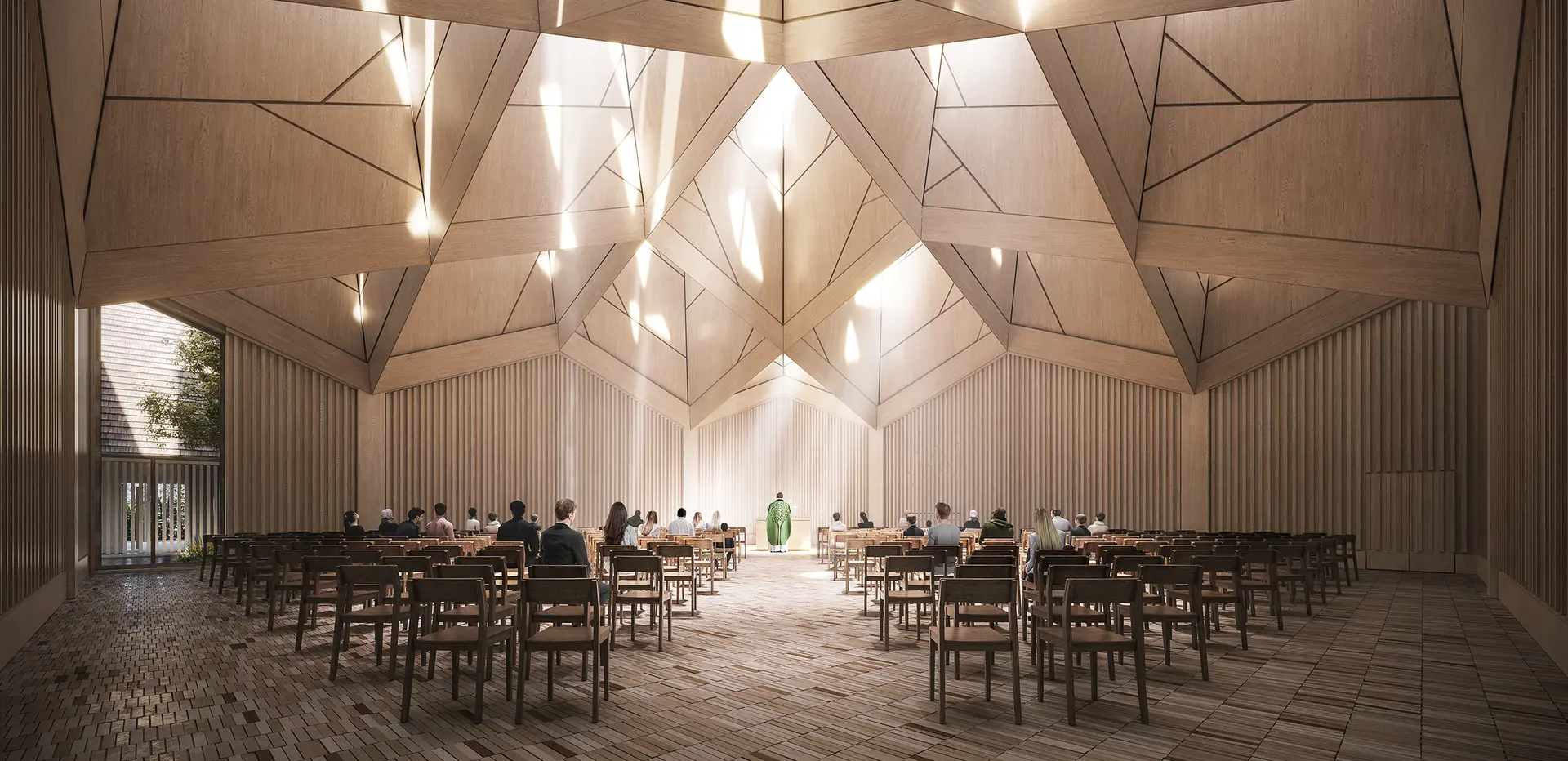
Copenhagen, Denmark
2018 - 2031
Fælledby
Copenhagen’s first all-timber neighborhood, Fælledby brings the urban environment into harmony with existing natural landscapes, establishing a community of ecologically responsive housing units organized according to the model of a ‘rural village’.
Project details
Client
Copenhagen Municipality
Status
Faced with the challenge of accommodating a growing urban population while preserving the area’s natural landscapes, our design for Fælledby envisions a progressive neighborhood on land that was once used as a dumping ground.
80% of the construction materials will be timber, and with low-rise buildings intended to house 7,000 residents as well as a school, a daycare center, an elderly home, and retail shops, the design rethinks the boundaries of a city’s conventional urban development by embracing the natural ecosystems that exist on its fringes.
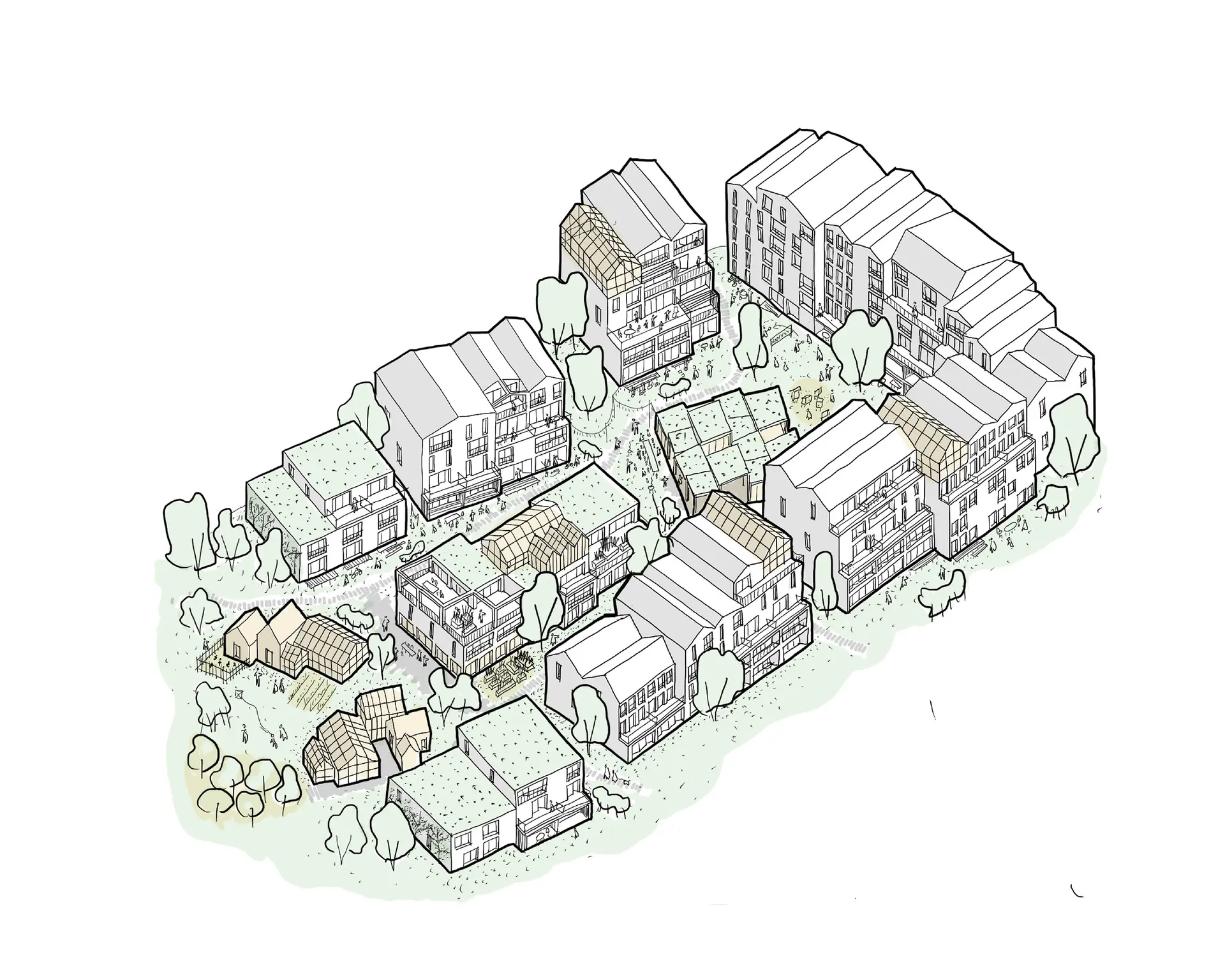
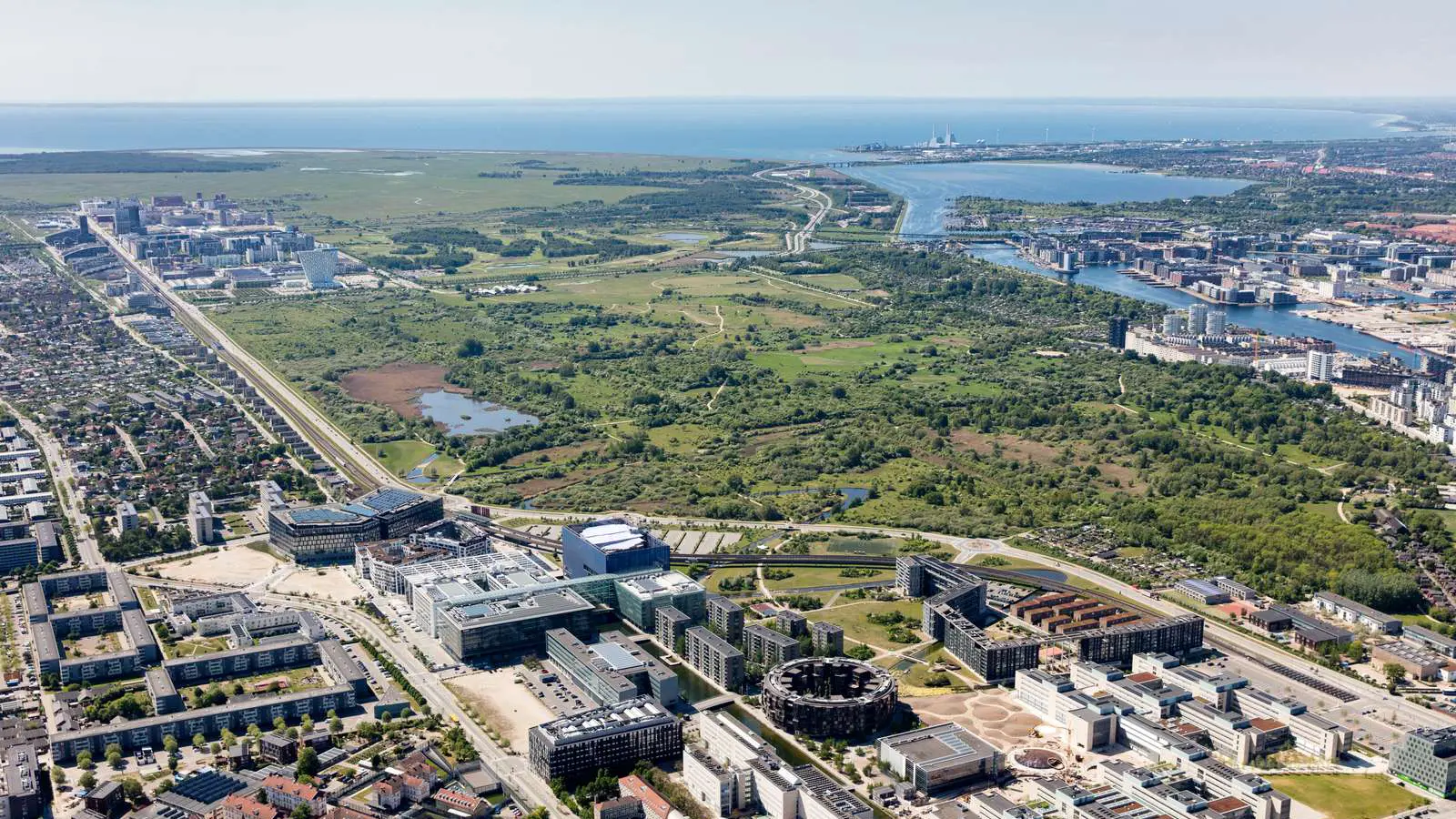
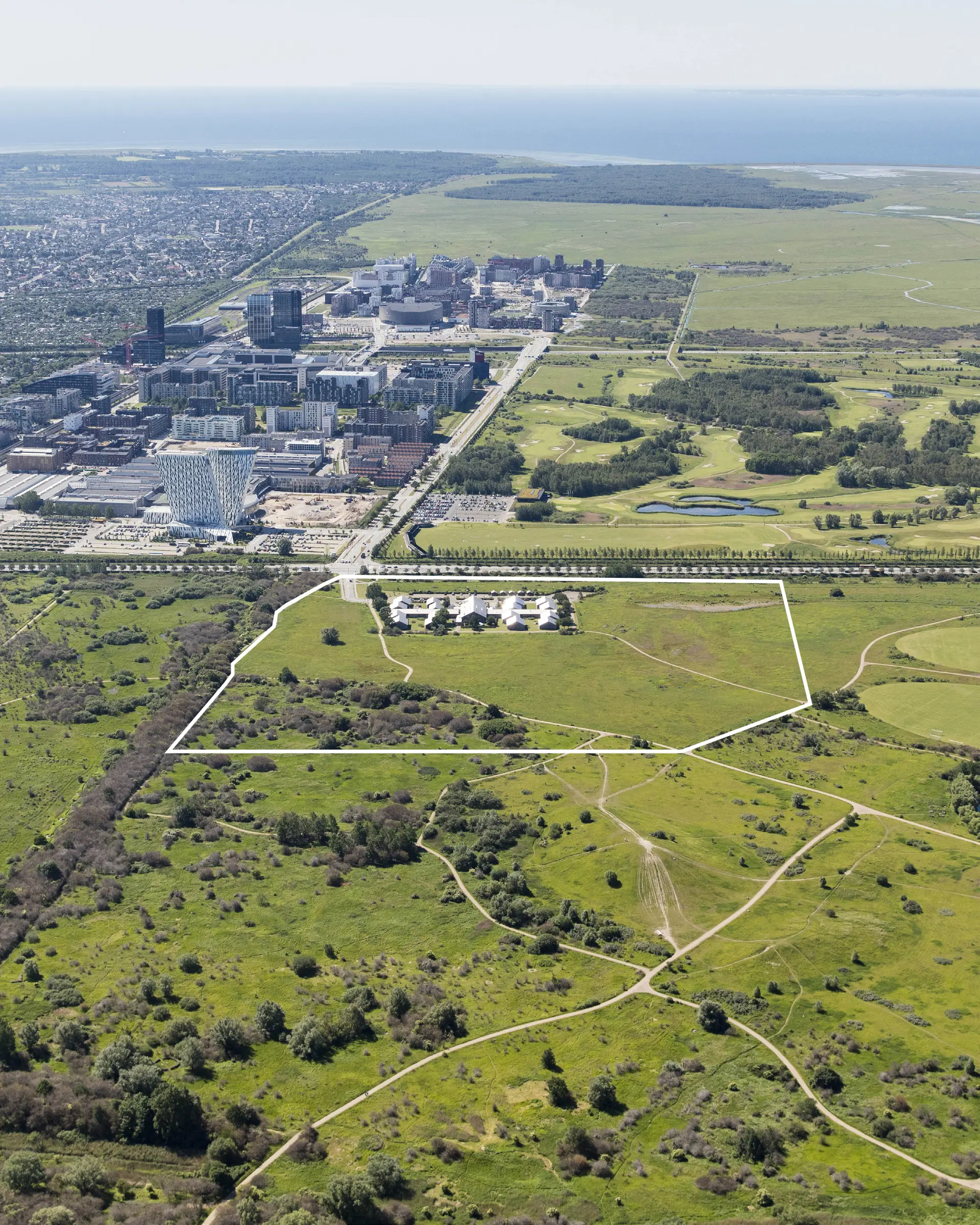
“Located in the city, yet surrounded by open, undeveloped landscapes, the location of Fælledby is just as rural as it is urban. This provides an opportunity to create a new city typology - something that we have approached with great humility and care.”
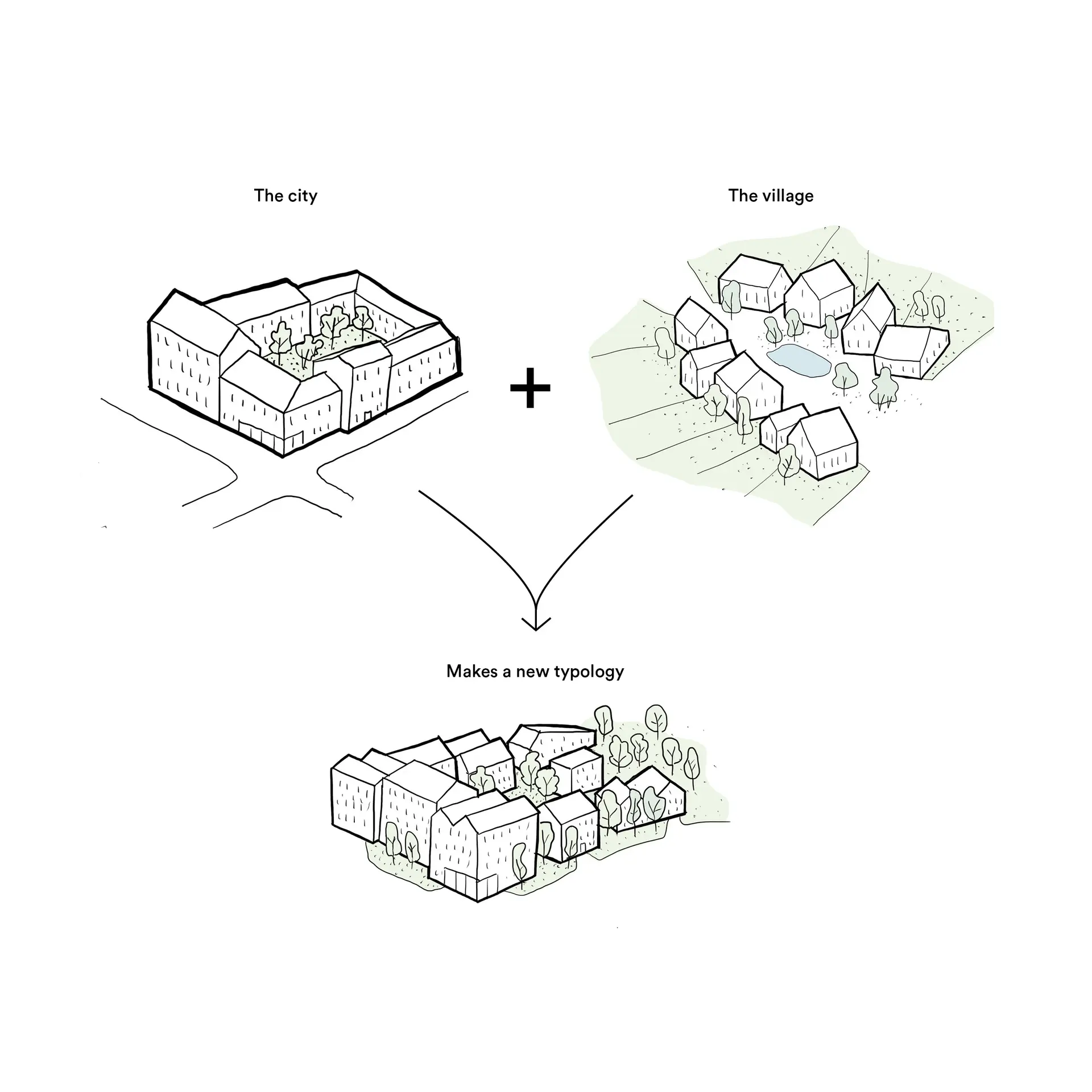
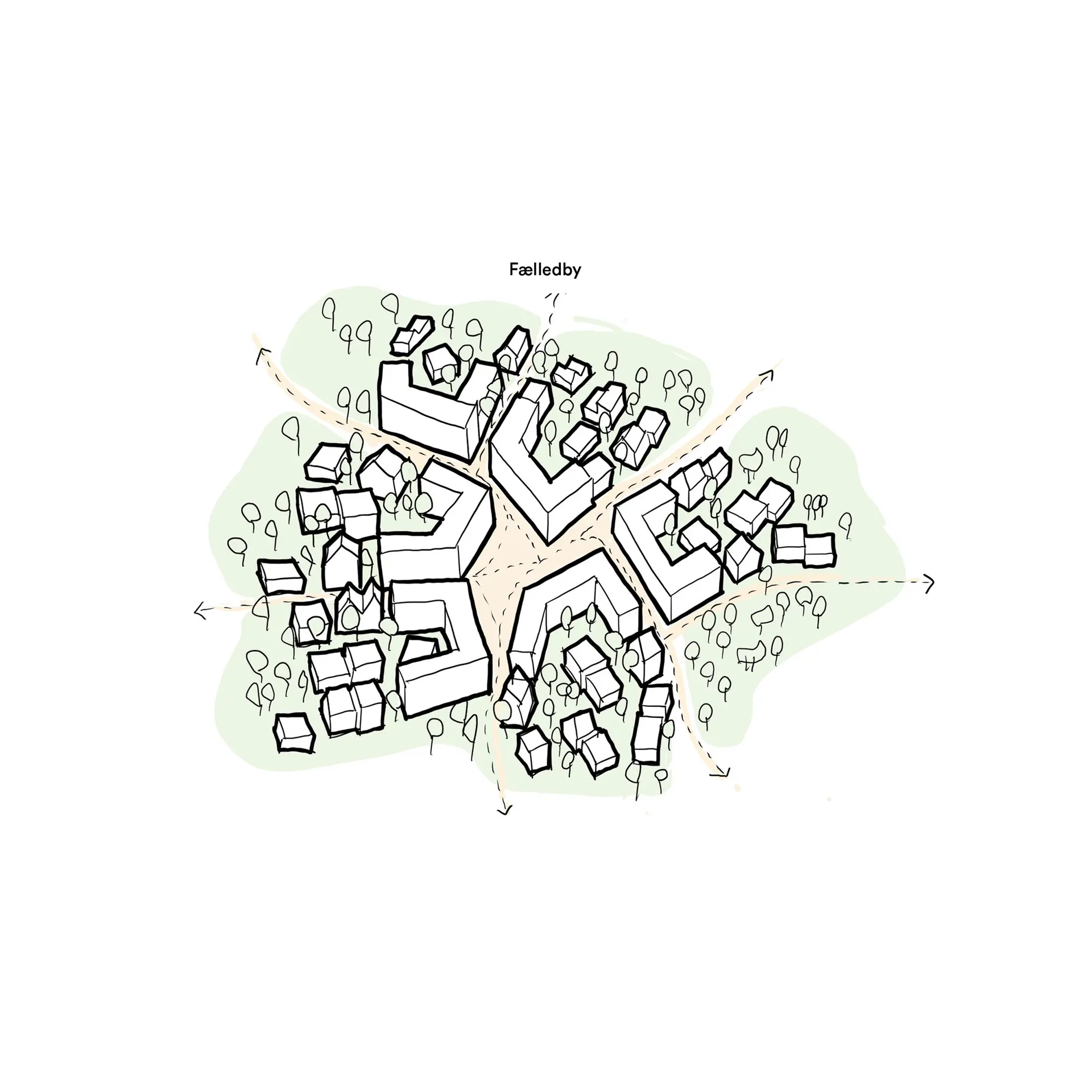
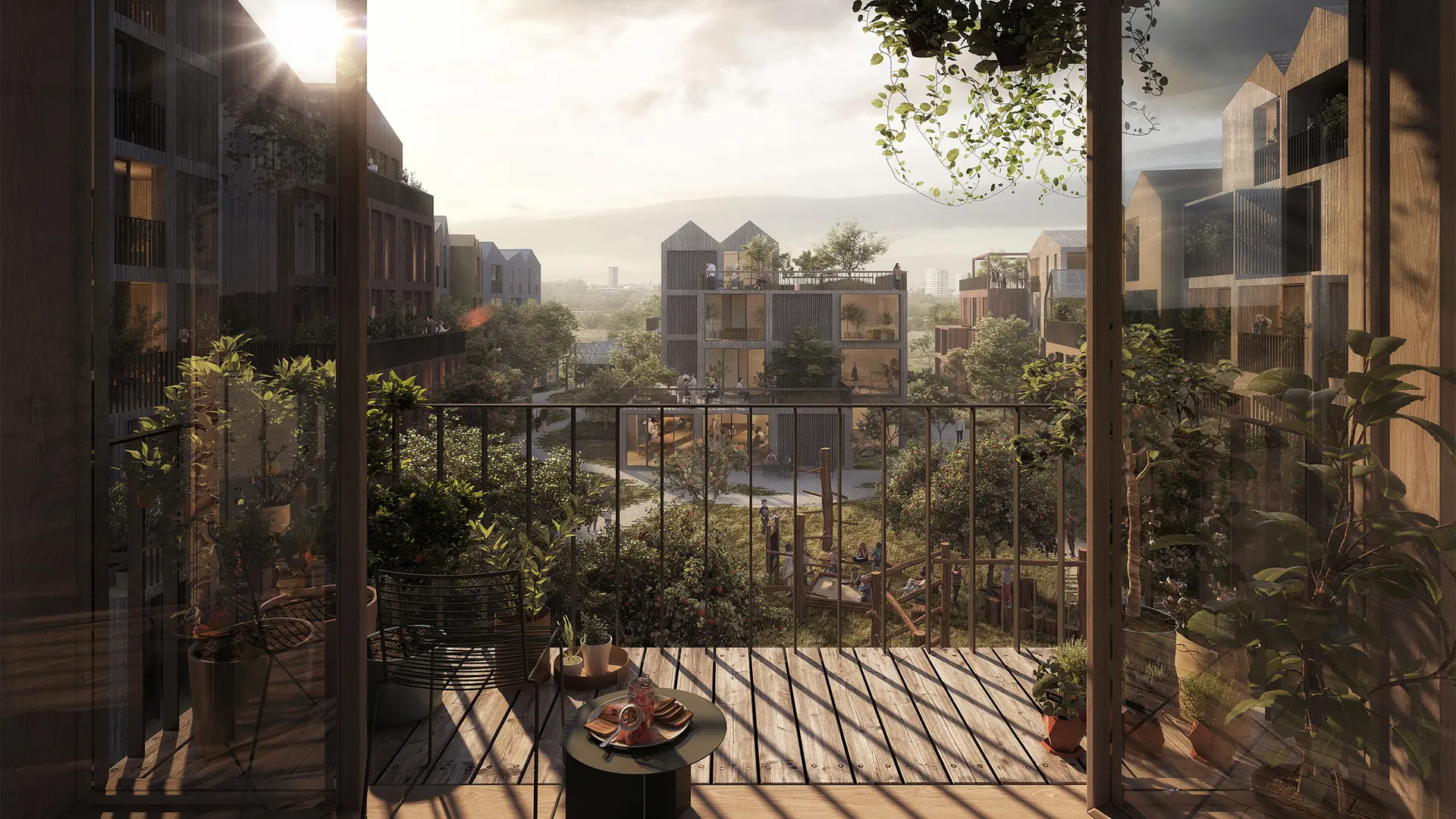
Inviting nature in
Nature and biodiversity are wholly integrated within Fælledby’s landscaping and architecture. Green footpaths draw the surrounding landscape into the plan, dividing Fælledby into three smaller clusters, or ‘mini villages’. Not only do these native-planted green corridors allow free movement for local wildlife, but they also give residents increased access to untamed, local nature, reachable from every residence in less than two minutes on foot.
The scheme, developed in collaboration with biologists and environmental engineers from MOE, preserves 40% of the project 45-acre site as undeveloped habitats for local flora and fauna, including wetlands and dry scrub that house insects, turtles, and deer. Echoing this and with nature as the focal point, Fælledby’s built elements are designed to enhance and improve biodiversity within the community.
Narrowed roads and underground parking will reduce vehicle traffic and noise levels while nests built into external walls will provide habitats for songbirds and bats. Additionally, new ponds in each of the three clusters will offer homes for frogs and salamanders, and community gardens will make room for flowers to attract butterflies, bees, and other insects.

The scheme, developed in collaboration with biologists and environmental engineers from MOE, preserves 40% of the project 45-acre site as undeveloped habitats for local flora and fauna, including wetlands and dry scrub that house insects, turtles, and deer.
A connection to the land
Intended to foster a tight-knit community and a close connection to the landscape surrounding it, Fælledby is modeled on the idea of the rural village, translating its defining principles – active corners, green corridors, and a concentrated active center – into an environmentally minded district conceived to encourage social interaction between its future residents.
Public spaces, common areas, and shared facilities such as spaces for communal dining, crafting, and recreation are incorporated into the design to support active community life in the neighborhood. The plan also integrates areas for urban farming, offering residents access to productive fields, fruit orchards, and herb gardens, all of which extend a sense of connection to the land and place.
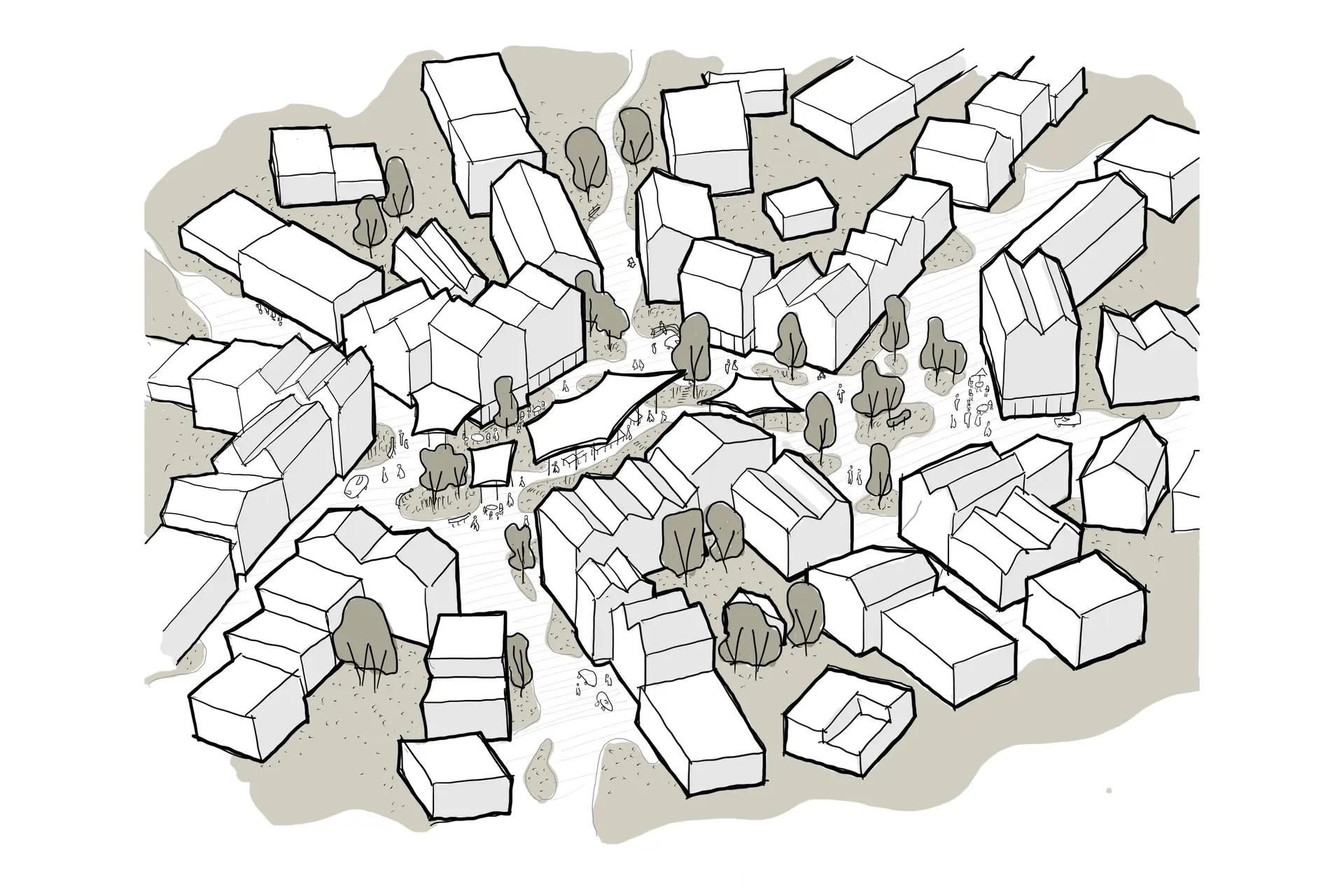
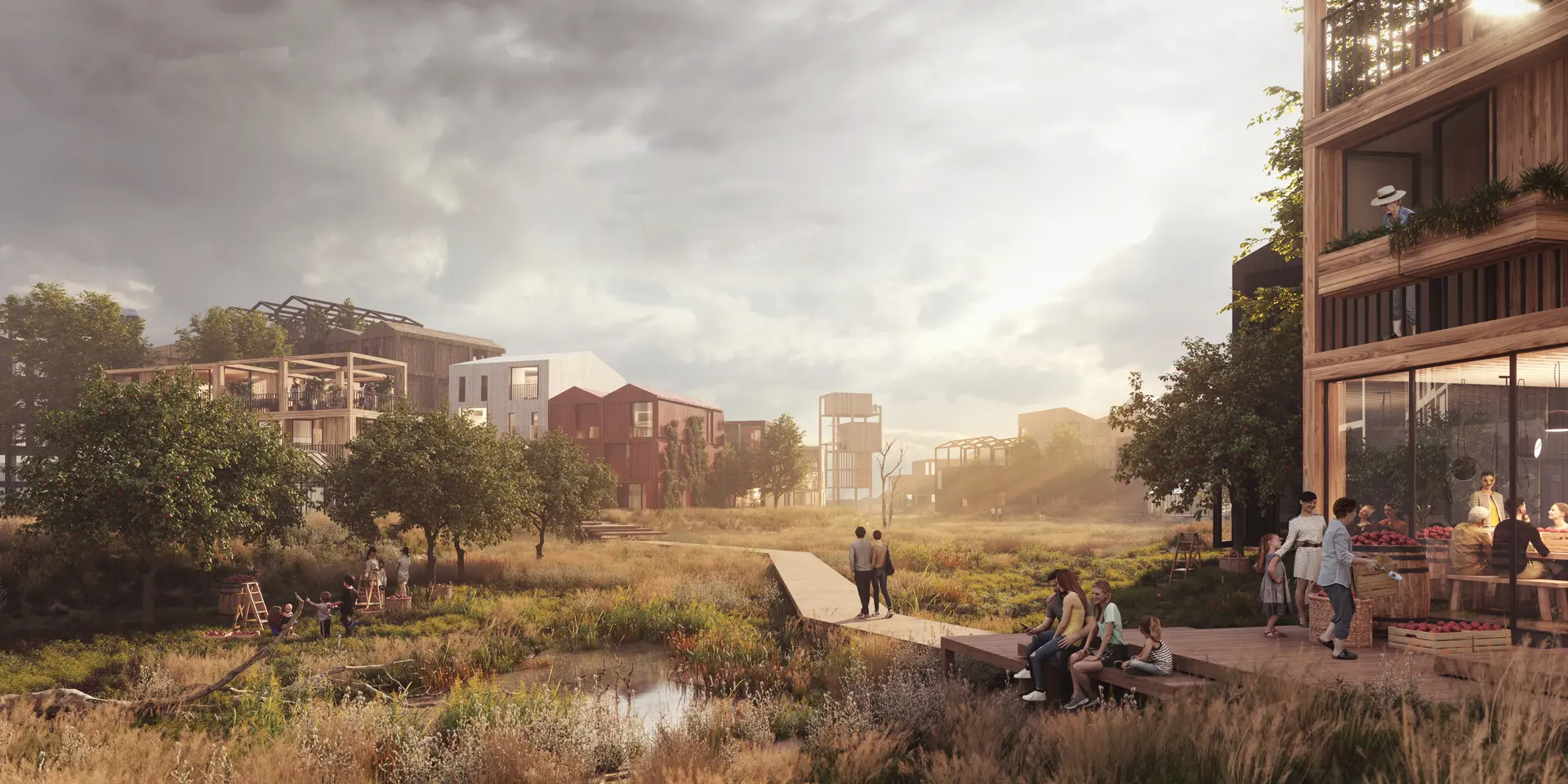
Blending urban and rural
Architecturally, Fælledby embodies a merge of rural and urban typologies, from traditional farmhouses with thatched roofs to modern apartment buildings. A neighborhood defined by its relationship to nature and use of biogenic materials, Fælledby’s design takes on the challenges of today and tomorrow while accounting for the diverse needs of people at all stages and walks of life.


Contact
All contacts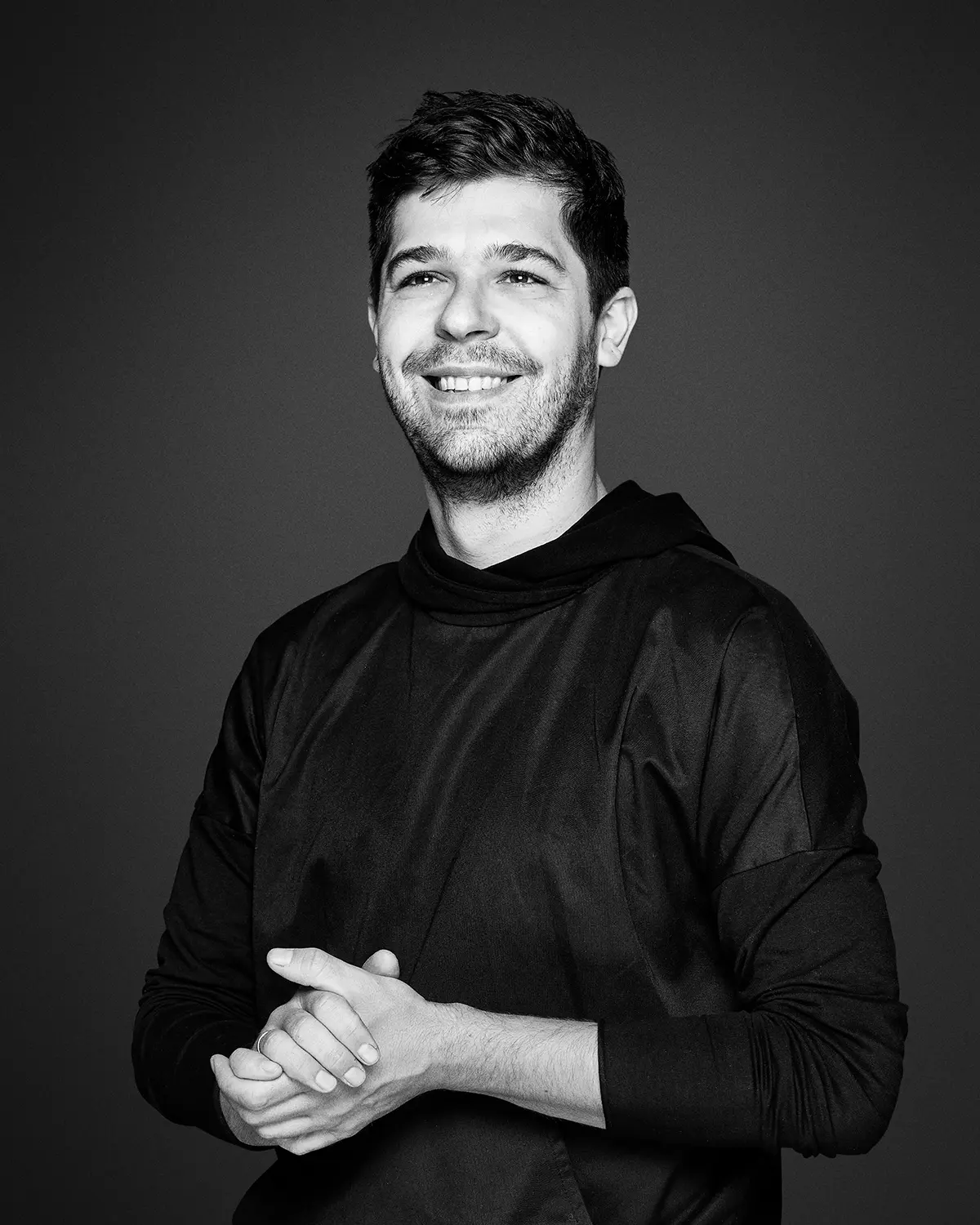
Mateusz Mastalski
Head of Urbanism

Head of Department, Landscape
Next project
Ørestad Church
Explore project